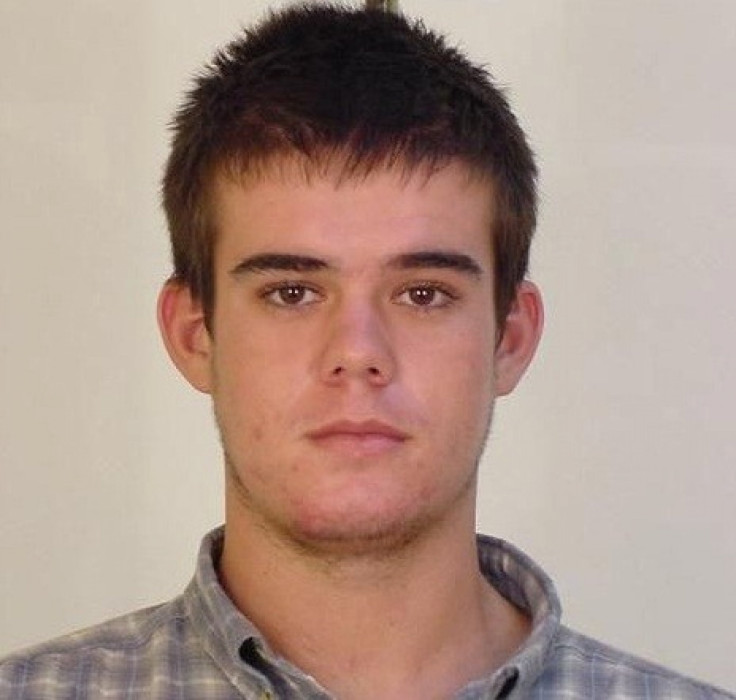Joran Van Der Sloot Extradition: Will US Charge Him In Natalee Holloway Case?

Joran Van Der Sloot, who is the only suspect in the 2005 disappearance of 18-year-old Alabaman Natalee Holloway, will reportedly be extradited from Peru to the U.S. within the next three months, according to Maximo Altez, van der Sloot's Peruvian attorney. Van der Sloot would face extortion charges upon setting foot on U.S. soil, but will the government also try to charge him for Holloway's alleged murder?
He will go to trial in the United States, Altez said. Once he is sentenced, he will return to Peru to finish serving his 28 years, and then go back to the States to serve whatever sentence he gets there.
The U.S. government had requested approval of van der Sloot's provisional detention, and on Wednesday, it was finally granted by a Peru judge, making van der Sloot one step closer to being extradited to the U.S. Now, according to the extradition treaty signed by the U.S. and Peru in 2001, the U.S. has 60 days to submit a formal extradition request and any other supporting documents to Peru.
If the U.S. fails to submit this formal request within 60 days, van der Sloot could be discharged from detention for extraiditon. Regardless, even if the U.S. doesn't get its formal request in on time, the standing treaty grants the U.S. the ability to try and extradite him again.
Joran van der Sloot was just 17 years old when he became the only suspect in the 2005 disappearance of Alabama teenager Natalee Holloway, who went missing during an unofficial graduation trip to Aruba and a particularly long night of partying and excessive drinking. Holloway was last seen by her classmates leaving an Aruban night club around 1:30 a.m. on May 30 with van der Sloot.
Bob Plummer was one of seven chaperones in attendance on the trip to Aruba. He recalls the first time the group truly noticed Holloway had gone missing:
The next morning, when we were getting the first set of buses off to the airport, they had checked off the first bus that was going to take the first set of students back to the airport, Plummer said. When we were getting ready to get the second group together, of which Natalee was a part, some of the students came up and said, We've not seen Natalee since last night.
The students told Plummer that they saw her get into a silver car with at least one young man.
We immediately got the students together, her roommates, and just, you know, asked them some general questions about what time it was, he said. [We] actually got her stuff together and brought it to the front of the resort because we were hoping maybe she would just show up late, and that way, we'd already have her stuff together so we'd be ready to go without missing her flight.
On June 9, 2005, Van der Sloot was arrested, along with brothers Deepak and Satish Kalpoe, aged 21 and 18, respectively. The Kalpoes were released in less than a month, while van der Sloot was released in September due to a lack of evidence. He had travel restrictions placed upon him to stay in the Netherlands, but as he continued his studies at the Hogeschool van Arnhem en Nijmegen to study business management, a high court removed the restrictions.
Van der Sloot said that neither he, nor the Kalpoe brothers, had sex with Natalee in Aruba, but he did admit the three originally conspired to lie to authorities. Van der Sloot told police that Holloway had been dropped off at her hotel, but later, he said he dropped her off alone at the beach. He said he regretted his decision.
Eventually, in November 2007, van der Sloot and the Kalpoe brothers were re-arested for suspicion of involvement in voluntary manslaughter and causing serious bodily harm that resulted in the death of Natalee Holloway, citing new incriminating evidence. All three individuals returned to Aruba for a court hearing, and all three were released between Dec. 1 and 7.
Though van der Sloot was never officially charged in Holloway's disappearance, he is currently serving a prison sentence of 28 years for another crime, the convicted killing and robbery of a Peruvian woman back in 2010. Van der Sloot admitted to killing 21-year-old Stephany Flores in his hotel room and then stealing more than $300 in local currency and credit cards, as well as the victim's van, in order to flee the country for Chile. As a result, van der Sloot received a sentence two years short of the 30-year maximum. They also forced him to pay roughly $74,500 in reparations to Flores' family, and they mandated that he be exiled from Peru at the end of his prison sentence.
However, Van der Sloot's sentence could be considerably longer. Since the treaty between the U.S. and Peru allows van der Sloot to be extradited exclusively for the purpose of prosecution, upon landing in America, van der Sloot would immediately face extortion charges for allegedly promising Holloway's mother that he would reveal the location of her daughter's body for $250,000. Holloway's mother Beth allegedly paid $25,000, but van der Sloot never followed through on his promise, according to prosecutors. Instead, they say van der Sloot used the funds to travel to Peru for a poker tournament.
Michael Griffith, a senior partner at the International Legal Defense Counsel, predicted van der Sloot would be extradited to the U.S. He believes the extortion charge is just a ploy to get him back in the U.S. to charge him for Holloway's alleged murder, which would earn him a life sentence.
The key to that is that the U.S. has jurisdiction over anybody, anywhere in the world, who kills or injures a U.S. citizen, Griffith said.
© Copyright IBTimes 2024. All rights reserved.












